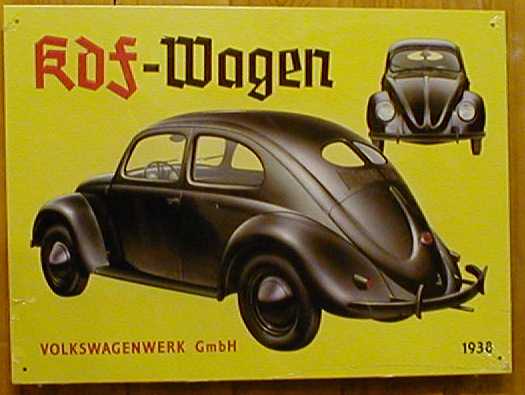 April 10
April 10April 10
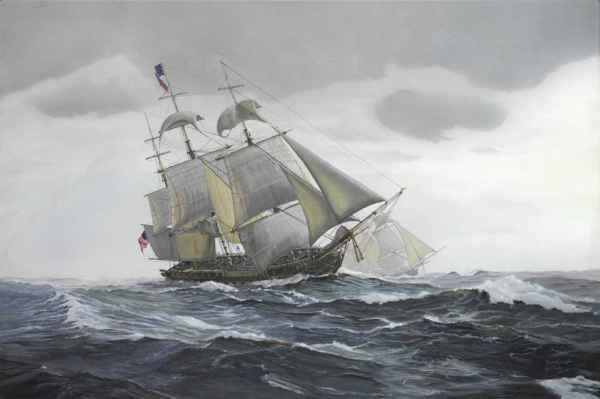
1800 The 44-gun sailing frigate USS President—built by Christian Bergh in New York—is launched. It is the fourth warship built under the first American Navy Act, March 27, 1794.
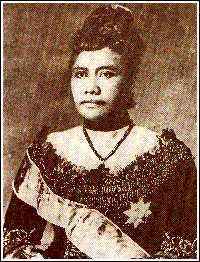
1877: Liliuokalani becomes the Crown Princess of Hawaii. (Kuykendall)
[See: Countdown to Infamy: Timeline to Pearl Harbor.]1899 From the speech "The Strenuous Life" delivered at a Chicago men’s club by Theodore Roosevelt:
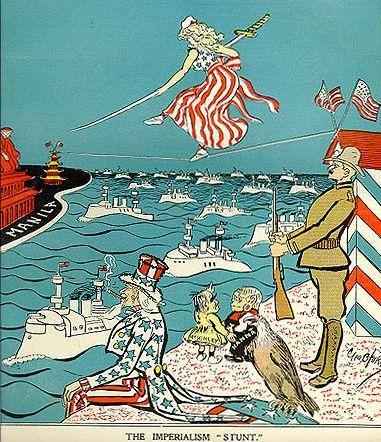
We cannot avoid the responsibilities that confront us in Hawaii, Cuba, (Puerto) Rico and the Philippines. All we can decide is whether we shall meet them in a way that will redound to the national credit, or whether we shall make of our dealings with these new problems a dark and shameful page in our history. To refuse to deal with them at all merely amounts to dealing with them badly. [For the full text, Click here.]

1916 World War I: Gefreiter Adolf Hitler endures trench warfare in Flanders (Artois) with 3 Company, 16 Reserve Infantry Regiment [List Regiment]. [For further details, Click here.]
1917 World War I:Various: Eddystone explosion:
On that Monday, April 10th at about 9:55 a.m., Building of the plant was torn apart by a terrible explosion. Building was where about 380 girls and young women were loading shells with black powder. One hundred and thirty-two persons, mostly girls, lost their lives in the explosion. The majority of the women killed worked in the loading room. The first explosion was followed by two smaller ones. Bodies were thrown in the air and some were found hundreds of yards away . . . . At first, many thought the explosion was an act of sabotage as the United States had just entered World War I, just days before the explosion. Fifty-two of the dead were never identified . . . . In less than two weeks the company was back to work. The mystery of the explosion was never solved. Whether it was carelessness on the part of a worker, German sabotage or Russian sabotage, the cause never became known. Investigators later felt that the Russian, Leon Trotsky, had the plant sabotaged to prevent the shells from reaching the new government set by Kerensky, which was democratic. The Plant closed shortly after the First World War ended, and remained empty for many years. [For further details, Click here.]
List Regiment: Gefreiter Adolf Hitler's 16 Reserve Infantry Regiment, 3 Company, fortify trenches near Arras. [For further details, Click here.]
1918 World War I: Various:
Gefreiter Adolf Hitler's 16th RIR
Congress of Oppressed Nationalities closes in Rome:
The Congress of Oppressed Nationalities, convened in Rome, Italy, during the second week of April 1918, closes on April 10, after representatives from the Czechoslovak, South Slav (or Yugoslav), Romanian and Polish National Committees proclaim their right to become "completely independent national States" after World War I ends.
U.S. President Woodrow Wilson's call for "self-determination" for all nations in his famous Fourteen Points speech, delivered in January 1918, began a decisive year in the history of the diverse peoples of central and eastern Europe. America's entry into the war brought renewed hope to the exhausted Allies–France Britain, and Italy–and made them far more receptive to plans made by representatives of the Czech and South Slav populations now under control of the Austro-Hungarian Empire. Even Italy, with its hopes of territorial expansion along the Dalmatian coast, chose to support the right of the South Slavs to independence. With Russia out of the war, the other Allies no longer had to respect that nation's claims to Poland, and they also began to defend the notion of a reorganized, independent Poland that would emerge when the war had been won.
The Congress of Oppressed Nationalities was sponsored by the Allies–particularly France and Italy–and designed to encourage the minority populations of different ethnicities inside Germany and particularly Austria-Hungary to assert their right to self-determination and rebel against their oppressors, thus weakening the Central Powers and making an Allied victory more likely. The congress's closing vote, on April 10, denounced the Hapsburg government as an impediment to the rightful freedom and development of the nations and called for the dismemberment of Austria-Hungary once it had been defeated in the war.
As the delegates who attended the congress recognized, the future of the central and eastern European peoples–to a greater extent than that of anyone else in Europe or the rest of the world–rested wholly on the outcome of World War I. If the Central Powers proved victorious, which still seemed possible in the spring of 1918, the different nationalities living in the Austro-Hungarian Empire would be given autonomous status but would remain under the control of the empire, now ruled by Emperor Karl I of Austria. If the Entente proved victorious, on the other hand, the empire would be broken into pieces, with the South Slavs joined in a large state ruled by the Serbian monarchy and the Czechs and Slovaks united into a single state, Czechoslovakia. In both cases, Poland would likely gain its independence, and would serve as a buffer between Europe and the vast expanse of the newly created Soviet state. (History.com)
1922 The Genoa Conference opens to discuss the reconstruction of Europe after World War I.
1932 Weimar: Paul von Hindenburg is reelected with 19 million votes (53 per cent) in German presidential elections, beating Adolf Hitler's 13 million votes (36 per cent).
1933 Various:
Church and Reich: FDR creates Civilian Conservation Corps: On this day in 1933, President Franklin D. Roosevelt establishes the Civilian Conservation Corps (CCC), an innovative federally funded organization that put thousands of Americans to work during the Great Depression on projects with environmental benefits. [For further details, Click here.]
1938 Annexionvolksabstimmung: In a national plebiscite, Austrian voters register 99.75% in favor of union with Germany: Austria becomes part of the Reich as a new state, divided into seven Gaue (states). Austria withdraws as a member state from the League of Nations because of the republic's incorporation into Germany. From Ernst Kaltenbrunner's IMT testimony: The plebiscite of 10 April 1938 was completely in accordance with the will of the Austrian population. The result of 99.73 percent for Anschluss to the German Reich was perfectly genuine . . . . The representation and opinion of the Prosecution are completely incorrect when they think that National Socialism in Austria at that time could in any way be compared with the development which had already taken place in Germany. The development of Austrian National Socialism was on the contrary completely different. 1940 World War II: Norway: The government and Royal family leave Oslo. Vidkun Quisling and his National Union Party seize power as a major naval battle takes place off Narvik.
1941 World War II: Various: Croatia declares independence: On this day in 1941, the German and Italian invaders of Yugoslavia set up the Independent State of Croatia (also including Bosnia and Herzegovina) and place nationalist leader Ante Pavelic's Ustase, pro-fascist insurgents, in control of what is no more than a puppet Axis regime.
The Ustase began a relentless persecution of Serbs, Jews, Gypsies, and antifascist Croats. As many as 350,000 to 450,000 victims were massacred, and the Jasenovac concentration camp would become infamous as a slaughterhouse.
Croatia's Serbs gave sporadic resistance, but it was the communist partisans, led by Josip Broz Tito (a Croat himself), who provided antifascist leadership. By 1944, most of Croatia—apart from the main cities—was liberated from Axis forces, and Croats joined partisan ranks in large numbers. As the war neared its end, however, many Croats, especially those who had been involved with the Ustase regime or who had opposed the communists, sought refugee status with the Allies. But British commanders handed them over to the partisans, who slaughtered tens of thousands, including civilians, on forced marches and in death camps.
US troops occupy Greenland to 'prevent Nazi infiltration.' President Franklin Delano Roosevelt speaks to the Congress: There are now in our ports a large number of foreign merchant vessels which have been here for considerable periods of time and which because of war conditions have not seen fit to depart. Section 902 of the Merchant Marine Act of 1936, as amended by the Act of August 7, 1939, authorizes the Maritime Commission, whenever the President shall proclaim that the security of the national defense makes it advisable or during any national emergency declared by proclamation, to requisition or purchase any vessel or other watercraft owned by citizens of the United States, or under construction within the United States, or to requisition or charter the use of any such property, and provides that the owner thereof shall be paid just compensation for the property taken or for its use. The same section provides a method by which compensation shall be determined. There does not appear to be any comparable provision with respect to foreign-owned vessels lying idle in our ports.
1942 World War II: Various: Bataan Death March: The day after the surrender of the main Philippine island of Luzon to the Japanese, the 75,000 Filipino and American troops captured on the Bataan Peninsula begin a forced march to a prison camp near Cabanatuan. During this infamous trek, known as the Bataan Death March, the prisoners are forced to march 85 miles in six days, with only one meal of rice during the entire journey. By the end of the march, which is punctuated with atrocities committed by the Japanese guards, hundreds of Americans and many more Filipinos die. The day after Japan bombed the US naval base at Pearl Harbor, the Japanese invasion of the Philippines began. Within a month, the Japanese had captured Manila, the capital of the Philippines, and the US and Filipino defenders of Luzon were forced to retreat to the Bataan Peninsula. Holocaust: 1,700 Jews from Leczyca and 1,240 from Grabow are transported for execution to Chelmno (Kulmhof). (THP)
1944 World War II: Various: Odessa War at Sea: A British midget submarine secretly enters Bergen harbor in Norway and sinks the German merchant ship Barenfels.
Holocaust: Auschwitz II (Birkenau): Rudolf Vrba and Alfred Wetzler escape from the death camp. Their report resulted in Allied bombing which halted the deportation of Jews from Hungary.
1945 World War II: Various: Seelow Heights: Another pivotal point on the Eastern Front at this time was the German defense of Breslau, which the Soviets badly wanted to take. The Soviet Sixth Army was stalled at the Silesian capital, and Marshal Ivan Konev needed the Sixth for the final drive on Berlin. There was still one major obstacle to the Soviet advance—the rolling plains and plateaus of an area known as the Seelow Heights, only 35 miles from the German capital. Not since 1210, when the Order of Teutonic Knights had forced the Poles out of Prussia and crossed the Vistula River, had an enemy approached the Prussian frontier from the east. These lands were held by families that dated back to the baronies instituted during the 13th century, and the Soviets would find them heavily defended. The groundwork laid by Frederick I, "Barbarossa," and the Hohenstaufens in 1190 was still tangible, even in the age of National Socialist Germany. But things were about to change. [For further details, Click here.]
From the diary of Margaret 'Daisy' Suckley [FDR's distant cousin and close friend]: Another beautiful, warm day. F [FDR] had his usual morning, with me reading the paper by his window, while he had his breakfast (and) read all the war dispatches in 2 or 3 papers. He has the whole western front in Europe in his head, knows exactly where each army is at any moment. He says he has to, for sometimes he has to make decisions about operations.. I was surprised at this, thinking that Eisenhower would have the final say about such things, but F explained it this way: Some time ago, Eisenhower made a forward movement in the southern part of the line. Winston Churchill promptly cabled F a protest . . . . F, knowing what the plans were, sent an explanation to W.S.C. backing up Eisenhower. (Meacham) Holocaust: Medics of the US 3rd Armored Division report that they have discovered Nordhausen Death Camp on the way to Camp Dora. In the two adjacent camps they discover 5,000 corpses. 1,200 patients are soon evacuated, with 15 dying on their way to the hospital area and another 300 subsequently dying of malnutrition. The killing at Dora had continued to the end; six slave workers had been hanged in the factory on March31. Other workers were executed at Dora for lack of zeal or to encourage the work force by being strangled on a six-noose gallows; fifty-seven prisoners were once hanged at Dora in a single day. Of the 60,000 slave workers sent to Dora, 40,000 had died by the end of the war, and they were still dying, when tanks of the 3rd US Armored Division rolled into Nordhausen. Only 400 were still alive in the Dora compound, lying in their own excrement, surrounded by corpses, some of them, according to an eyewitness, 'stacked up in heaps, like firewood.' Holocaust: The American Third Army liberates the prison camp at Buchenwald, where nearly 57,000 prisoners (mostly Jews) had perished. (Sellier) Dr Nelte: Did you answer to one of Colonel Williams' questions that Goering, Himmler, Keitel, and Hitler had decided to shoot the officers who escaped in Sagan? 1947 Nuremberg Tribunal: Einsatzgruppen Trial: Military Tribunal II-A sentences twenty convicted defendants. Fourteen of the defendants, members of German mobile killing units, are sentenced to death.
1948 Nuremberg Tribunal: Otto Ohlendorf is sentenced to death by hanging: In June 1941, Reinhard Heydrich appointed Ohlendorf to be commander of Einsatzgruppe D which operated in southern Ukraine and Crimea. Ohlendorf's Einsatzgruppe would be responsible for the 13 December 1941 massacre at Simferopol where at least 14,300 people, mostly Jews, were executed. Over 90,000 executions are attributed to Ohlendorf's command, who testified to this effect during his trial at Nuremberg. 1972 Chaplin receives Oscar:
As part of his first visit to the United States in 20 years, British film pioneer Charlie Chaplin accepts an honorary Academy Award for his "incalculable" contribution to the art of filmmaking. Chaplin, once America's most successful movie star and director, had left the country under a storm of controversy in 1952.
Born in London, England, in 1889, Chaplin was the son of music-hall performers, and he appeared onstage from a young age. His father later died, and his mother was put in a mental institution, leading to a rough childhood that ended when Chaplin joined his half-brother's vaudeville troupe at the age of 17. Mack Sennett, the innovator of U.S. slapstick movie comedy, discovered Chaplin during a U.S. appearance by the vaudeville troupe. In 1913, he was signed to appear in movies produced by Sennett's Keystone Company.
In his second picture, Kid Auto Races at Venice (1914), Chaplin originated the character that would make him famous—the "Little Tramp." The tramp wore a derby hat, neatly kept moustache, baggy trousers, and cane, and affected a bowlegged walk in his oversize shoes. He was an underdog hero, beloved by moviegoers, and Chaplin would play him in more than 70 films. In the era of silent film, slapstick was king, and Chaplin was a master of physical comedy. He became one of the most recognized U.S. personalities and commanded increasingly high salaries. He soon took to directing his own movies and, with Mary Pickford, Douglas Fairbanks, and D.W. Griffith, founded United Artists in 1919 so he could have greater control over his projects.
Chaplin directed, starred in, wrote, produced, and composed the music for his feature-length comedies, including The Kid (1921), The Gold Rush (1925), City Lights (1931), Modern Times (1936), and The Great Dictator (1940). These films addressed social and political issues of the day, which, seen through the eyes of the Little Tramp, appeared a little sharper. After the advent of sound in the late 1920s, Chaplin appeared less often in movies, but his fame continued to grow as his films won new audiences and became recognized as motion picture classics.
Away from the camera, Chaplin's personal life often drew sensational headlines. He was married four times, three times to his leading ladies, and in 1943 was accused by another woman of fathering her child. That year, in another controversial move, he married Oona O'Neill, the 18-year-old daughter of playwright Eugene O'Neill. Chaplin was 54. Chaplin's political views were also criticized, as was his failure to apply for U.S. citizenship. Pressed for back taxes and accused of supporting subversive causes by McCarthy-era America, Chaplin left the United States in 1952. Informed that he would not necessarily be welcomed back, he retorted, "I wouldn't go back there if Jesus Christ were president," and surrendered his re-entry permit in Switzerland. He lived with his family at Corsier-sur-Vevey, Switzerland, and made several more films.
In April 1972, he did return to the United States for a visit and accepted an honorary Oscar. He had previously won an honorary Academy Award, in 1929 for The Circus (1928). In 1975, Queen Elizabeth II knighted him. He died on December 25, 1977. (History.com)
1978 Volkswagen becomes the first non-American automobile manufacturer to build cars in the United States, opening a plant in Pennsylvania. Edited by Levi Bookin (Copy editor) Click to join 3rdReichStudies Please note that the list-owner and the moderator are not responsible for, and do not necessarily approve of, the random ads placed on our pages by our web server. They are the unfortunate price one pays for a 'free' website. FAIR USE NOTICE: This site may contain copyrighted material the use of which has not always been specifically authorized by the copyright owner. We are making such material available in our efforts to advance understanding of historical, political, human rights, economic, democracy, scientific, environmental, and social justice issues, etc. We believe this constitutes a 'fair use' of any such copyrighted material as provided for in section 107 of the US Copyright Law. In accordance with Title 17 U.S.C. Section 107, the material on this site is distributed without profit to those who have expressed a prior interest in receiving the included information for research and educational purposes. If you wish to use copyrighted material from this site for purposes of your own that go beyond 'fair use', you must obtain permission from the copyright owner.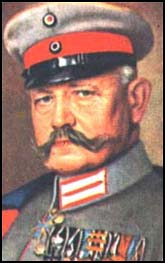


The starting point was the abnormal economic depression in Austria and beyond that the Anschluss movement, and finally National Socialism made the Anschluss come true. This course, from economic depression via Anschluss movement to National Socialism, was the road of nearly all National Socialists, and the ideology of the Party program of the time was in no way responsible. I believe this has to be taken for granted and I believe I also ought to say it first, that the Anschluss movement in Austria was backed by the people; the fact that the plebiscite in the various provinces, like the Tyrol or Salzburg, had already in previous years—I believe from 1925 to 1928—shown a result of more than 90 percent of the votes in favor of the Anschluss should now be taken into consideration. Back in 1928 the National Council of Austria and the Austrian Federal Council signed the decree of the National Council of the year 1918 which said that both these assemblies had resolved to join the Reich; and they did not swerve from that resolution. 
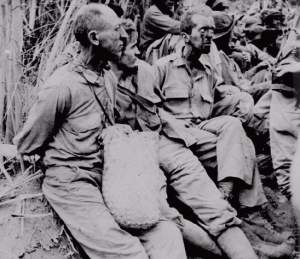
For the next three months, the combined US-Filipino army, under the command of US General Jonathan Wainwright, held out impressively despite a lack of naval and air support. Finally, on 7 April, with his army crippled by starvation and disease, Wainwright began withdrawing as many troops as possible to the island fortress of Corregidor in Manila Bay. However, two days later, 75,000 Allied troops were trapped by the Japanese and forced to surrender. Of those who survived the Bataan Death March to reach the Japanese prison camp near Cabanatuan, few will live to celebrate US General Douglas MacArthur's liberation of Luzon in 1945. In the Philippines, homage is paid to the victims of the Bataan Death March every April on Bataan Day, a national holiday that sees large groups of Filipinos solemnly re-walking parts of the death route. [For further details, Click here.]
When the sound of American artillery reached the camp on 5 April 1945, the slaves of Dora were hurriedly evacuated, many to the camp at Belsen. Over a thousand of them did not get that far. Their SS guards marched them into barns at Gardelegen in Northwest Germany and set the barns alight. Many of their tormentors were far more fortunate, escaping punishment, or being spirited away to safety. Werner von Braun and Arthur Rudolf, the head of production at Dora, were taken to the United States, and richly rewarded for their part in the American space program. 
Westhoff: No, that is a mistake. Colonel Williams asked me what the Fuehrer had said to Field Marshal Keitel; thereupon, I answered clearly that I could give no information about this, since I had not taken part in that conference. I could only make statements about the conference which Field Marshal Keitel had with General Von Graevenitz.
Dr Nelte: Did you answer Colonel Williams that Field Marshal Keitel, during this conference with Graevenitz, said, "This is my order"?'
Westhoff: No, the Field Marshal could not issue an order regarding the shootings, since the shootings were not within the competence of the Wehrmacht but in that of the Gestapo.
Dr Nelte: During your interrogation, particularly also with Colonel Williams, did you state clearly that it never had been a question of an order issued by Keitel himself or of an order which Keitel transmitted to you on higher orders?
Westhoff: It concerned information given to General Von Graevenitz. That is also stated with no reservations in my sworn statement. Dr Nelte: Then, if I understand you correctly, you declare that Field Marshal Keitel never issued an order of his own nor ever expressed the idea that he at all wanted to give you an order regarding a shooting of the officers? Westhoff: No, that he could also not do. [For the full text of today's proceedings, Click here.]
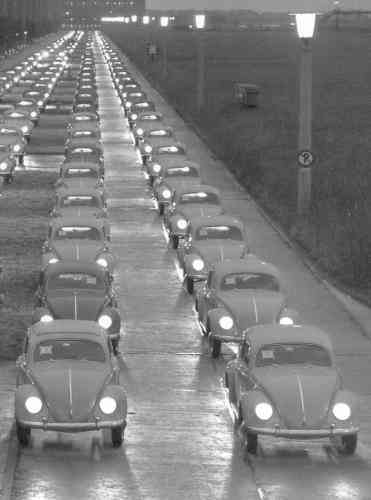
levi.bookin@gmail.com







